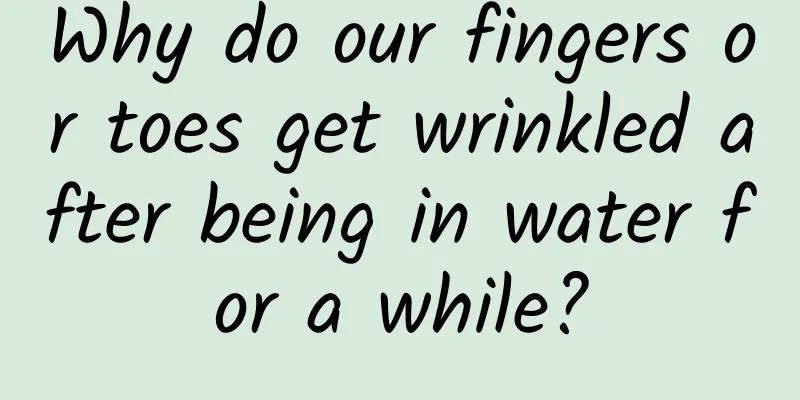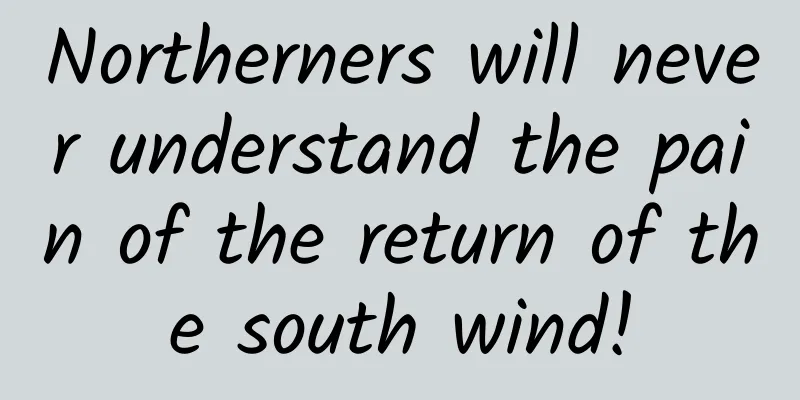Why do our fingers or toes get wrinkled after being in water for a while?

|
If the hairless skin on a person's fingers, toes and other parts of the body is immersed in water for a long time, wrinkles will occur. I believe everyone has encountered this situation. As for the cause of wrinkling, it was discovered as early as the 1930s. It is not simply that the fingers or toes absorb water. This wrinkling phenomenon is actually controlled by the human body's autonomic nervous system . If the nerves of the fingers are cut off or damaged, then wrinkling will not occur. But the strange thing is, why does wrinkling only happen on the fingers and other parts of our body, but not on other parts of our body? In fact, this is also related to the particularity of our fingers and other parts. On the surface of our body, it is composed of layers of dead cells without cell nuclei, also known as the stratum corneum. The cells of the stratum corneum contain keratin, a protein that can reduce the evaporation of water from the body's surface and absorb water to prevent the skin from becoming too dry. Since our fingers and other parts of the body are most frequently sensitive to the outside world, the stratum corneum on our fingers is much thicker than that on other parts of the body. Therefore, when we take a bath or soak in water, the human autonomic nervous system will control the blood vessels under the skin of the fingers to contract, and then the keratin will absorb water and swell, and from the outside, the fingers will look like wrinkles. ➤What does wrinkling do to us? The current research results are relatively consistent: wrinkles on fingers, toes and other parts of the body are to adapt to humid environments, such as better grasping, holding, climbing and other operations . Simply put, it is to increase the friction of contact with objects. Let’s take tires as an example. In dry weather, smooth tires or treaded tires can provide better grip; But if the ground is wet, obviously, the pleated tires will have better grip on wet ground, because these pleats will form a "small drainage network", and the water on the ground will flow away through this drainage network, thus maintaining a relatively firm grip. Similar to tires, the wrinkles on our fingers serve a similar purpose. When our fingers are wrinkled, if we want to grab a wet object, our fingers will start to exert force, and the wrinkles on our fingers are like drainage channels, which "squeeze away" the water on the object. This can increase the friction coefficient between the fingers and the object, allowing us to use various wet objects well in a wet environment. But there is a problem. Our fingers can pick up wet objects when they are dry, so why do we need to make our fingers wrinkled? Although the question seems boring, some researchers still conducted an experiment in which they divided the subjects into two groups. One group had dry fingers, and the other group had wrinkled fingers. The time required for the two groups to transfer wet objects was compared. The experiment used a smooth marble ball, which was placed in a transparent container filled with water. The subjects were arranged to stand in predetermined positions to minimize the impact of water refraction on objects in the water. The ball was uniformly transferred by holding it between the index finger and thumb. A timer was then used to record the time it took the two groups to move the marble. The results showed that the group with wrinkled fingers was, on average, nearly 20 seconds faster than the group with dry fingers. As a control group, the experiment also arranged two groups to transfer dry marble balls, and the time taken by the two groups was recorded. The results showed that whether the fingers were wrinkled or not had no effect on moving dry objects. So, the reason is actually simple, wrinkled fingers can use wet items faster and better than dry ones. This is also the result of the continuous evolution of our ancient ancestors. When primates hunt or gather food in the wild on rainy days, wrinkled fingers or toes can help them stand more steadily on wet ground, allowing them to collect food more efficiently. In addition, wrinkled fingers can more flexibly use stone tools and various tools that have been wet by rain or soaked for too long. ➤Why don’t our fingers and toes always get wrinkled? Although there is no complete experimental description yet, wrinkled fingers do not show any advantages when using dry objects. On the contrary, wrinkling fingers requires certain conditions and also sacrifices some of the fingers' somatosensory sensitivity. I believe everyone has experienced this. After the fingers are wrinkled, the sense of touch of the fingertips will become duller and not as sensitive as when they are dry. Perhaps for this reason, the fingers and toes will not remain wrinkled all the time. |
<<: The refrigerator is cold at the bottom and hot at the top? Many people misunderstand it
Recommend
Product Operation: The 50 most touching advertising copies!
What advertising copy has most impressed you? Wha...
Tesla crashed into guardrail after failing to brake, after-sales test reproduced the accident, official test showed the brakes were qualified
Over the past year, news about Tesla's "...
How much does it cost for Songyuan to develop a luggage mini app?
How much is the quotation for Songyuan luggage de...
Toutiao | Only open to small and medium-sized advertisers, how good is the conversion rate of the CPA model?
The conversion cost is sometimes high and sometim...
Zhejiang Telecom Hosting Prices
Telecom hosting price, telecom hosting is the ser...
How much does it cost to join the Korla Fabric Mini Program?
There are two types of Korla fabric app franchise...
Why should we start with farming to protect these "leopards"?
Hello everyone, I am Shi Qijing from Cat Alliance...
A girl born in the 1990s makes 70,000 yuan a month by making Hanfu for cats. Why are Hanfu for cats so popular?
A girl born in the 1990s makes 70,000 yuan a mont...
6 marketing breakthroughs for billion-dollar brands
In the trillion-dollar new consumer market, why i...
How to increase the popularity of Douyin live broadcast room?
Short video content and live streaming have alway...
Why do some people have blue veins on their hands? Be careful if you have blue veins in these places
Have you ever noticed this phenomenon: some peopl...
How much does it cost to be an agent of Haixi Animation Mini Program?
How much does it cost to be an agent of an animat...
Discussion on optimization scheme for opening the first screen of mobile H5 within seconds
As the performance of mobile devices continues to...
Five Nobel Prizes are related to it. Why is vitamin B so important?
Tuchong Creative In recent years, vitamins have b...
Analysis of 4 factors of Keep user experience!
A week ago, QuestMobile released the "China ...









